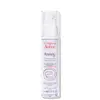What's inside
What's inside
 Key Ingredients
Key Ingredients

 Benefits
Benefits

 Concerns
Concerns

 Ingredients Side-by-side
Ingredients Side-by-side

Water
Skin ConditioningMandelic Acid
AntimicrobialPhosphatidylcholine
EmulsifyingGlycerin
HumectantPropanediol
SolventNiacinamide
SmoothingBeta-Glucan
Skin ConditioningLactic Acid
BufferingRetinal
Skin ConditioningSodium Gluconate
Skin ConditioningEpilobium Angustifolium Flower/Leaf/Stem Extract
Skin ConditioningChlorella Vulgaris Extract
Skin ConditioningArtemisia Umbelliformis Extract
Skin ConditioningMelaleuca Alternifolia Leaf Oil
AntioxidantOcimum Basilicum Leaf Extract
Skin ConditioningHamamelis Virginiana Water
AstringentCucumis Sativus Fruit Extract
EmollientOlea Europaea Leaf Extract
PerfumingChamomilla Recutita Flower Extract
MaskingRubus Chamaemorus Seed Oil
Skin ConditioningRosmarinus Officinalis Leaf Oil
MaskingEucalyptus Globulus Leaf Oil
PerfumingLonicera Japonica Callus Extract
Skin ProtectingLonicera Caprifolium Extract
AstringentCitrus Paradisi Peel Oil
MaskingCyclodextrin
AbsorbentPentylene Glycol
Skin ConditioningSodium Hydroxide
BufferingXanthan Gum
EmulsifyingBenzyl Alcohol
PerfumingPotassium Sorbate
PreservativeAlcohol
AntimicrobialCitric Acid
BufferingWater, Mandelic Acid, Phosphatidylcholine, Glycerin, Propanediol, Niacinamide, Beta-Glucan, Lactic Acid, Retinal, Sodium Gluconate, Epilobium Angustifolium Flower/Leaf/Stem Extract, Chlorella Vulgaris Extract, Artemisia Umbelliformis Extract, Melaleuca Alternifolia Leaf Oil, Ocimum Basilicum Leaf Extract, Hamamelis Virginiana Water, Cucumis Sativus Fruit Extract, Olea Europaea Leaf Extract, Chamomilla Recutita Flower Extract, Rubus Chamaemorus Seed Oil, Rosmarinus Officinalis Leaf Oil, Eucalyptus Globulus Leaf Oil, Lonicera Japonica Callus Extract, Lonicera Caprifolium Extract, Citrus Paradisi Peel Oil, Cyclodextrin, Pentylene Glycol, Sodium Hydroxide, Xanthan Gum, Benzyl Alcohol, Potassium Sorbate, Alcohol, Citric Acid
Water
Skin ConditioningTriethylhexanoin
MaskingCyclopentasiloxane
EmollientCetearyl Alcohol
EmollientCyclohexasiloxane
EmollientCeteareth-20
CleansingPolymethyl Methacrylate
Ceteareth-33
CleansingCaprylic/Capric Triglyceride
MaskingAmmonium Acryloyldimethyltaurate/Vp Copolymer
Oenothera Biennis Oil
EmollientPhenoxyethanol
PreservativeBenzoic Acid
MaskingDisodium EDTA
Retinal
Skin ConditioningTocopheryl Glucoside
EmollientOleoyl Dipeptide-15
Skin ConditioningMica
Cosmetic ColorantSodium Hydroxide
BufferingSilica
AbrasiveBHT
AntioxidantOleoyl Tetrapeptide-31
AntioxidantTocopherol
AntioxidantTitanium Dioxide
Cosmetic ColorantCaramel
Cosmetic ColorantCI 17200
Cosmetic ColorantWater, Triethylhexanoin, Cyclopentasiloxane, Cetearyl Alcohol, Cyclohexasiloxane, Ceteareth-20, Polymethyl Methacrylate, Ceteareth-33, Caprylic/Capric Triglyceride, Ammonium Acryloyldimethyltaurate/Vp Copolymer, Oenothera Biennis Oil, Phenoxyethanol, Benzoic Acid, Disodium EDTA, Retinal, Tocopheryl Glucoside, Oleoyl Dipeptide-15, Mica, Sodium Hydroxide, Silica, BHT, Oleoyl Tetrapeptide-31, Tocopherol, Titanium Dioxide, Caramel, CI 17200
Alternatives
Ingredients Explained
These ingredients are found in both products.
Ingredients higher up in an ingredient list are typically present in a larger amount.
Retinal is a form of retinoid. Retinoids are the gold-standard class of anti-aging ingredients.
Retinal has many benefits as other retinoids: improve skin texture, reduce large pores, reduce the effects of aging, reduce the visibility of dark spots, heal scars, and fight acne.
Studies show retinal may work at a faster rate than retinol due to its structure.
All retinoids have to be converted into retinoic acid before starting to work. Some retinoids take several steps of conversion before binding. Retinal is only one step away, making it more potent.
Like other retinoids, retinal may be irritating. It is best to ease into using this ingredient frequently.
Using the 'ramp up' method, start by using retinol once a week. This gives your skin time to adjust and decrease irritation. Once you feel ready, you can slowly increase the frequency of retinol use.
Using retinoids will increase sun-sensitivity in the first few weeks of use. Though studies show retinoids increase your skin's natural SPF with continuous use, it is best to always wear sunscreen and sun-protection.
Learn more about RetinalSodium Hydroxide is also known as lye or caustic soda. It is used to adjust the pH of products; many ingredients require a specific pH to be effective.
In small amounts, sodium hydroxide is considered safe to use. However, large amounts may cause chemical burns due to its high alkaline.
Your skin has a natural pH and acid mantle. This acid mantle helps prevent harmful bacteria from breaking through. The acid mantle also helps keep your skin hydrated.
"Alkaline" refers to a high pH level. A low pH level would be considered acidic.
Learn more about Sodium HydroxideWater. It's the most common cosmetic ingredient of all. You'll usually see it at the top of ingredient lists, meaning that it makes up the largest part of the product.
So why is it so popular? Water most often acts as a solvent - this means that it helps dissolve other ingredients into the formulation.
You'll also recognize water as that liquid we all need to stay alive. If you see this, drink a glass of water. Stay hydrated!
Learn more about Water